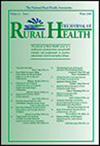Associations between COVID-19 therapies and outcomes in rural and urban America: A multisite, temporal analysis from the Alpha to Omicron SARS-CoV-2 variants
Abstract
Purpose
To investigate the enduring disparities in adverse COVID-19 events between urban and rural communities in the United States, focusing on the effects of SARS-CoV-2 vaccination and therapeutic advances on patient outcomes.
Methods
Using National COVID Cohort Collaborative (N3C) data from 2021 to 2023, this retrospective cohort study examined COVID-19 hospitalization, inpatient death, and other adverse events. Populations were categorized into urban, urban-adjacent rural (UAR), and nonurban-adjacent rural (NAR). Adjustments included demographics, variant-dominant waves, comorbidities, region, and SARS-CoV-2 treatment and vaccination. Statistical methods included Kaplan-Meier survival estimates, multivariable logistic, and Cox regression.
Findings
The study included 3,018,646 patients, with rural residents constituting 506,204. These rural dwellers were older, had more comorbidities, and were less vaccinated than their urban counterparts. Adjusted analyses revealed higher hospitalization odds in UAR and NAR (aOR 1.07 [1.05–1.08] and 1.06 [1.03–1.08]), greater inpatient death hazard (aHR 1.30 [1.26–1.35] UAR and 1.37 [1.30–1.45] NAR), and greater risk of other adverse events compared to urban dwellers. Delta increased, while Omicron decreased, inpatient adverse events relative to pre-Delta, with rural disparities persisting throughout. Treatment effectiveness and vaccination were similarly protective across all cohorts, but dexamethasone post-ventilation was effective only in urban areas. Nirmatrelvir/ritonavir and molnupiravir better protected rural residents against hospitalization.
Conclusions
Despite advancements in treatment and vaccinations, disparities in adverse COVID-19 outcomes persist between urban and rural communities. The effectiveness of some therapeutic agents appears to vary based on rurality, suggesting a nuanced relationship between treatment and geographic location while highlighting the need for targeted rural health care strategies.


 求助内容:
求助内容: 应助结果提醒方式:
应助结果提醒方式:


